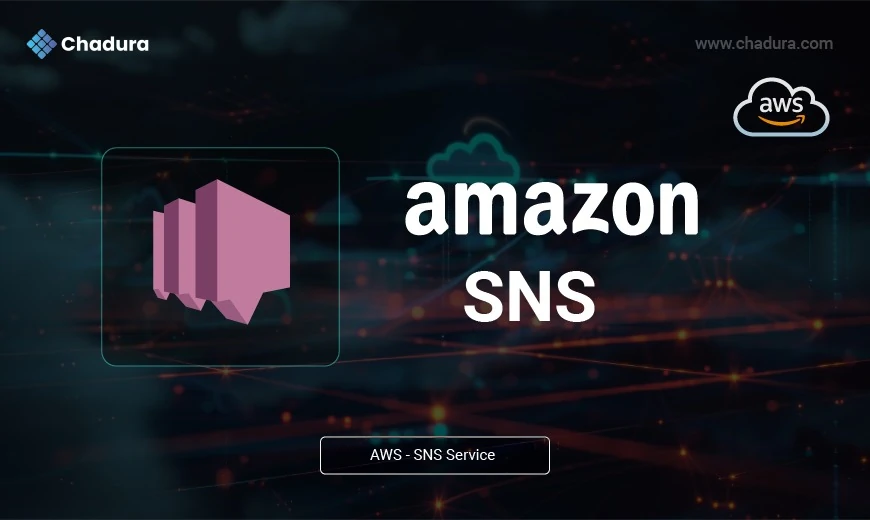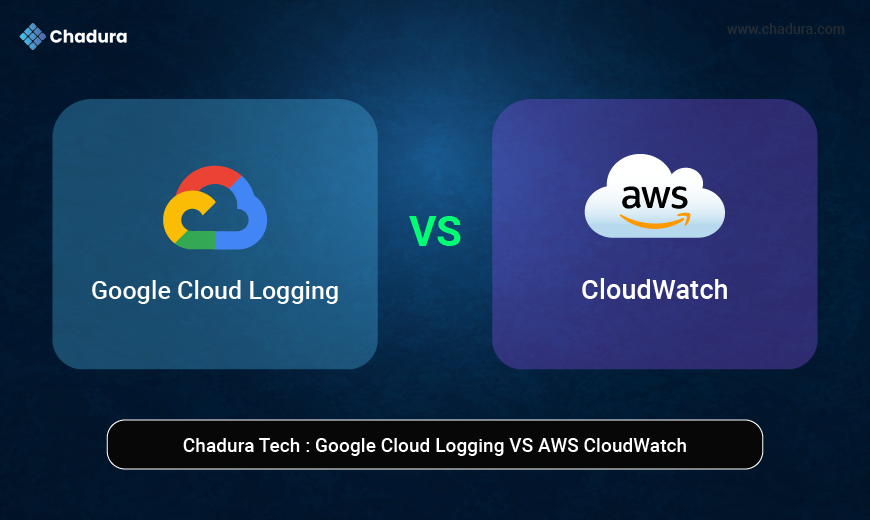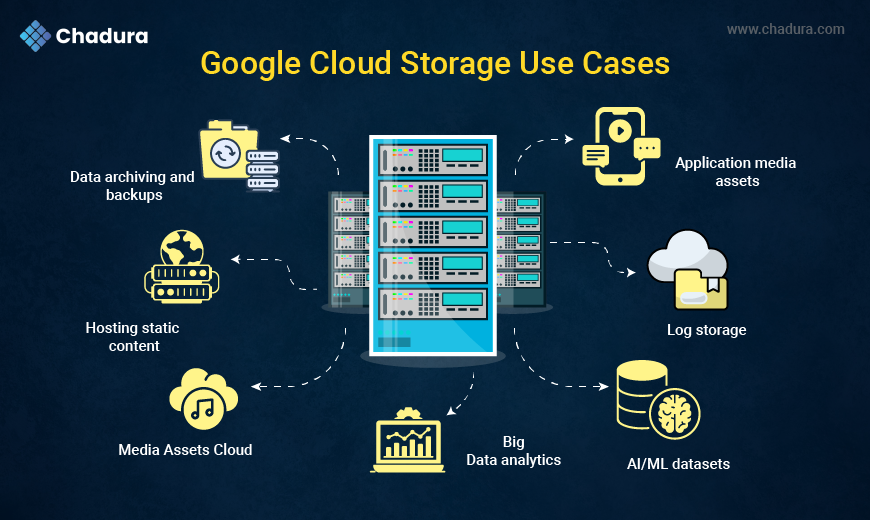Amazon SNS is a fully managed pub/sub messaging service. It allows applications to push messages to multiple subscribers, systems, or endpoints using a publish-subscribe (pub/sub) model.You publish a message to a topic, and SNS delivers it to all subscribers of that topic. These subscribers can be other AWS services, HTTP endpoints, email addresses, or even SMS-enabled devices.
How Does (AWS) Amazon Simple Notification Service (SNS) Work?
Simple Notification Service (SNS) delivers the notifications via SMS or email to an Amazon Simple Queue Service (SQS), AWS lambda functions, or an HTTP endpoint. Once CPU utilization of an instance exceeds 80%, the AWS cloudwatch alarm is activated. The cloudwatch alarm triggers the SNS topic thus alerting the subscribers to the high CPU utilization of the instance. SNS service is related to a unique-named topic. It serves as a logical point of access and channel of communication for publishers and subscribers.
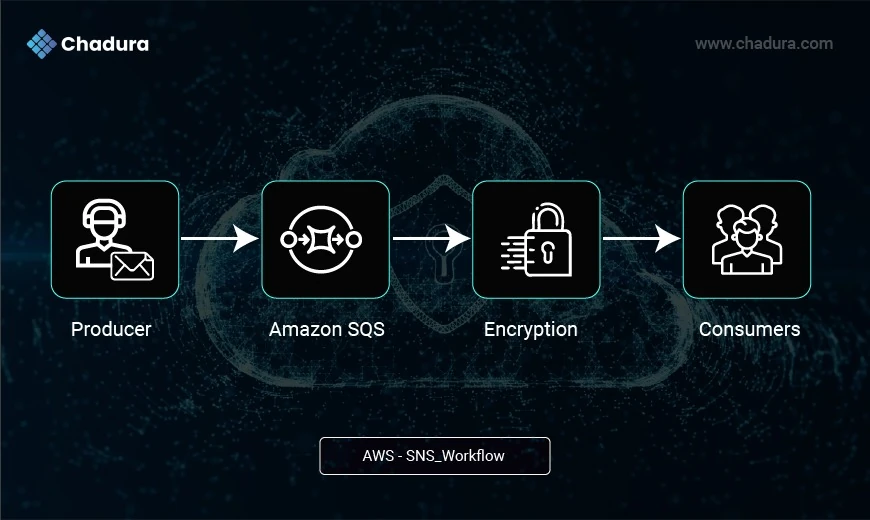
Key Features of AWS SNS :
- Pub/Sub Messaging Model
SNS allows decoupled components to communicate by publishing messages to a shared topic. - Multiple Protocols Supported
SNS can deliver messages via:- HTTP/S
- Email/Email-JSON
- SMS (text messages)
- Amazon SQS (Simple Queue Service)
- AWS Lambda functions
Application endpoints (for mobile push notifications)
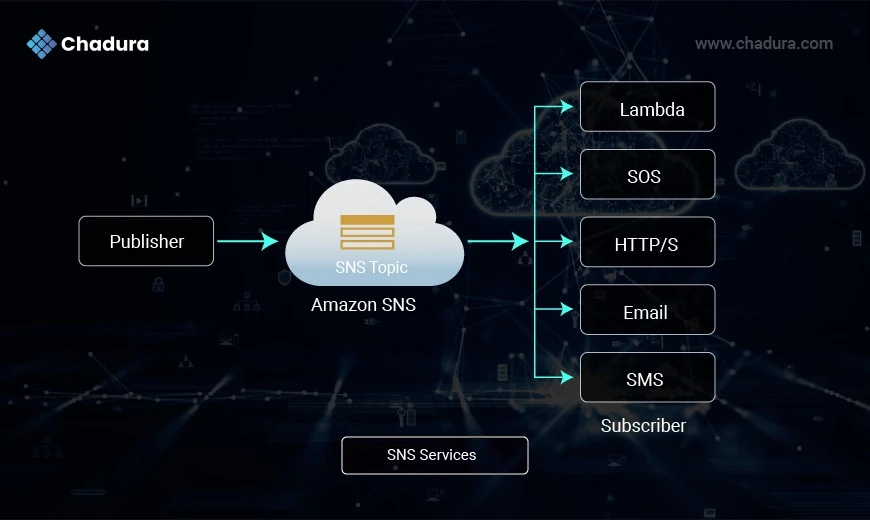
- High Throughput & Scalability
SNS supports a high volume of messages and can scale automatically to accommodate increasing traffic without the need for manual intervention. - Message Filtering
Subscribers can receive only the messages that interest them by using attribute-based message filtering. - Durability and Reliability
SNS uses multiple Availability Zones to ensure that your messages are delivered even in the face of infrastructure failures. - Encryption and Access Control
SNS supports encryption using AWS KMS and provides fine-grained access control using AWS IAM policies.
Benefits Of Using (AWS) Amazon Simple Notification Service (SNS) SNS
- Scalability: AWS SNS is designed to handle a large number of messages, making it ideal for applications that need to send millions of notifications simultaneously.
- Real-time notifications: SNS ensures that messages are delivered in real-time to the subscribed endpoints, which is crucial for time-sensitive applications.
- Multiple protocols support: SNS supports various protocols such as HTTP, HTTPS, email, SMS, and even AWS Lambda functions, allowing flexibility in how messages are delivered.
- High availability and durability: Being a part of AWS infrastructure, SNS offers high availability and fault tolerance, ensuring message delivery even in the event of an infrastructure issue.
- Easy integration with other AWS services: SNS integrates seamlessly with other AWS services like S3, EC2, Lambda, and CloudWatch, enabling automation and alerting across the AWS ecosystem.
- Cost-effective: SNS follows a pay-as-you-go model, making it a cost-effective solution for sending notifications, with no upfront costs or long-term commitments.
Use Cases for AWS SNS
- System Alerts and Monitoring: Notify administrators via SMS or email if system metrics (e.g., CPU usage) exceed thresholds.
- Application Communication: Trigger workflows in different microservices by publishing messages.
- User Notifications: Send alerts, confirmations, or promotional messages to end users via email or mobile push.
- Serverless Architectures: Integrate with AWS Lambda for event-driven programming.
Features (AWS) Amazon Simple Notification Service (SNS)
- Scalability: Simple Notification Service (SNS) had a capacity to handle millions of messages per second from thedifferent sources.
- Security: Simple Notification Service (SNS) is very secured and it also offers wide range of security offers.
- High Avalibility: Simple Notification Service (SNS) is designed to have more durability which ensures the message are delivered without any latency.
- Flexibily To Use: SNS supports a variety of transport protocols and can be used to send notifications to a variety of applications.
1. Publishers: Starting Communication
They send messages asynchronously to subscribers by creating and publishing a message to a topic (i.e. a logical communication channel and access point). They do not put a specific destination (e.g. – email ID) into each message rather, publish a message to the topic.
They publish messages to topics they are authorized to publish. They publish messages to an SNS topic, and Amazon SNS will distribute them to the right subscribers.
Subject:
- The subject serves as a communication channel where publishers pass messages to.
- Seamless Distribution:
- Publishers can produce messages asynchronously without concern for message delivery where and how.
Examples of Publishers:
Microservices, EC2 instances, or application components that require sending real-time updates or notifications.
2. Subscribers:Receiving and Responding to Messages
Subscribers such as web servers, email addresses, Amazon SQS queues, and AWS Lambda functions are notified over one of the supported protocols such as Amazon SQS, HTTP/S, email, SMS, Lambda) when they subscribe to the topic. Amazon SNS matches the topic to a list of subscribers who have subscribed to the topic and sends the message to each of the subscribers.
Amazon SNS classified as Application-to-application (A2A) or Application-to-person (A2P) subscribers.
A2A Subscribers: These are services like Amazon SQS, AWS Lambda, and HTTPS endpoints that subscribe to a topic and process incoming messages automatically.
- Amazon SQS: Acts as a message queue, enabling decoupled and durable message storage.
- AWS Lambda: Processes events in real-time, executing code based on incoming messages.
- HTTPS: Web servers or services that receive messages through HTTP/S endpoints.
- A2P Subscribers: These include individual users who receive notifications via email, SMS, or push notifications.
- Email: Sends notifications via email to subscribers.
- Mobile text (SMS): Sends text alerts directly to users.
- Mobile push: Pushes notifications to mobile devices.
Pricing
AWS SNS offers a free tier, which includes:
- 1 million publishes
- 100,000 HTTP notifications
- 1,000 email notifications
- 100 SMS messages per month
Beyond the free tier, SNS charges based on the number of messages published and delivered, and the protocol used. For SMS, pricing varies by destination country.
Amazon SNS (Simple Notification Service)
Amazon SNS is a fully managed pub/sub messaging service that enables applications to send messages to multiple subscribers instantly. It uses a push-based model, where messages published to a topic are immediately delivered to all subscribed endpoints such as email, SMS, HTTP/S endpoints, AWS Lambda, or Amazon SQS.
Key Points:
- Push-based message delivery
- Supports multiple protocols (email, SMS, Lambda, etc.)
- Ideal for fan-out, real-time alerts, and event broadcasting
Amazon SQS (Simple Queue Service)
Amazon SQS is a fully managed message queuing service that enables decoupling and scaling of microservices, distributed systems, and serverless applications. It uses a pull-based model, where messages are stored in a queue until a consumer retrieves and processes them. SQS supports both Standard (high throughput) and FIFO (ordered and deduplicated) queues.
Key Points:
- Pull-based message retrieval
- Message retention up to 14 days
- Ideal for decoupling services and asynchronous job processing
Conclusion
AWS SNS is a great tool for developing contemporary, event-driven applications. If you want to send notifications to users, initiate workflows, or connect to other services, SNS provides a cost-effective and flexible solution. By decoupling communication between components, it enables scalability, reliability, and maintainability throughout your architecture.


